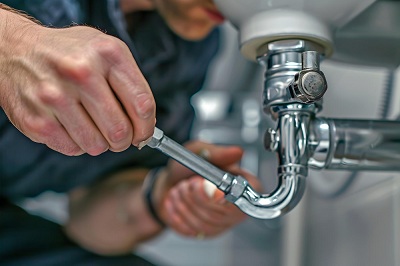Water is one of our most precious resources, yet it is often wasted due to inefficient plumbing systems, leaks, and outdated fixtures. With growing environmental concerns and rising utility bills, eco-friendly plumbing is becoming an essential part of modern homes and businesses.
By adopting sustainable plumbing practices, you can reduce water waste, lower your monthly bills, and contribute to environmental conservation. Whether you’re a homeowner, renter, or business owner, making small changes to your plumbing system can have a huge impact on both your wallet and the planet.
In this guide, we’ll explore the benefits of eco-friendly plumbing, water-saving fixtures, smart plumbing solutions, and practical tips to make your home more water-efficient.
1. Why Eco-Friendly Plumbing Matters
Before diving into solutions, let’s understand why sustainable plumbing is important.
A. Water Conservation and Environmental Impact
- Freshwater is a limited resource—only 3% of Earth’s water is drinkable.
- Wasted water increases carbon footprint—processing and transporting water requires energy.
- Droughts and climate change are straining water supplies globally.
B. Cost Savings on Water and Energy Bills
- The average household wastes 10,000 gallons of water per year due to leaks.
- Water-efficient fixtures can reduce usage by 30% or more.
- Heating water consumes energy—using less hot water lowers electricity and gas costs.
C. Sustainable Living and Home Value
- Eco-friendly homes increase property value and appeal to buyers.
- Many governments offer rebates for water-saving upgrades.
- Reducing water waste aligns with green living and sustainability goals.
2. Water-Saving Fixtures for an Eco-Friendly Home
Upgrading your plumbing with high-efficiency fixtures is one of the easiest ways to conserve water.
A. Low-Flow Toilets
- Old toilets use 3-5 gallons per flush, while low-flow models use only 1.28 gallons.
- Dual-flush toilets let you choose a low-volume flush for liquids and a full flush for solids.
- Saves thousands of gallons per year in an average home.
Tip: Look for WaterSense-certified toilets for maximum efficiency.
B. Water-Efficient Showerheads
- Traditional showerheads use 2.5 gallons per minute (GPM), while low-flow models use 1.5 GPM or less.
- Modern designs maintain strong water pressure while using less water.
- Saves up to 2,900 gallons per year for a family of four.
Tip: Install aerated showerheads that mix air with water for a satisfying shower.
C. Faucet Aerators
- Small, inexpensive devices that reduce water flow without affecting performance.
- Can cut faucet water use by 30-50%.
- Simple to install on bathroom and kitchen faucets.
💡 Tip: Choose 0.5 GPM aerators for bathroom sinks and 1.5 GPM aerators for kitchen sinks.
D. High-Efficiency Washing Machines & Dishwashers
- Energy Star-certified washing machines use 50% less water and energy than older models.
- Water-efficient dishwashers use 3-5 gallons per cycle, compared to 10+ gallons for handwashing.
💡 Tip: Always run full loads to maximize water efficiency.
3. Smart Plumbing Solutions
Technology is making it easier than ever to monitor and control water usage.
A. Smart Leak Detection Systems
- Detect leaks automatically and send alerts to your phone.
- Some systems can shut off water supply to prevent damage.
- Prevents costly repairs from hidden leaks.
💡 Example: Flo by Moen and Phyn Plus monitor water usage in real time.
B. Greywater Recycling Systems
- Reuses water from sinks, showers, and laundry for irrigation.
- Reduces wastewater sent to the sewer.
- Lowers water bills by up to 40%.
💡 Tip: Check local regulations, as some areas require permits for greywater systems.
C. Rainwater Harvesting
- Collects rainwater from gutters for gardening and landscaping.
- Reduces demand on municipal water supply.
- Saves money, especially in drought-prone regions.
Tip: Use a filtration system if you plan to use rainwater for indoor purposes.
4. Practical Water-Saving Habits
Small daily changes can significantly reduce water waste.
A. Fix Leaks Immediately
- A dripping faucet can waste over 3,000 gallons per year.
- Leaky toilets can waste up to 200 gallons a day.
- Regularly check for leaks in pipes, faucets, and appliances.
Test your toilet for leaks: Add food coloring to the tank. If the color appears in the bowl within 30 minutes, you have a leak.
B. Turn Off Water When Not in Use
- Don’t leave the tap running while brushing teeth—save 8 gallons a day.
- Turn off the faucet while washing dishes—save 10 gallons per wash.
- Take shorter showers—even cutting 2 minutes saves 1,500 gallons per year.
Tip: Use a shower timer to track water usage.
C. Water Landscaping Wisely
- Water early in the morning or late in the evening to prevent evaporation.
- Use drought-resistant plants that require less water.
- Install a drip irrigation system instead of traditional sprinklers.
Tip: Add mulch to garden beds to retain moisture and reduce watering needs.
5. Government Rebates and Incentives
Many governments and water agencies offer rebates for installing water-efficient plumbing fixtures.
A. Rebates for Water-Saving Fixtures
- Some areas offer cash-back programs for installing low-flow toilets, showerheads, and washing machines.
- Municipalities may provide free faucet aerators and leak detection kits.
Example: California’s Turf Replacement Program pays homeowners to remove grass and install drought-friendly landscaping.
B. Tax Credits for Sustainable Home Improvements
- Certain green home upgrades qualify for federal or state tax incentives.
- Energy-efficient water heaters and solar water heating systems may be eligible.
💡 Tip: Check your local utility provider’s website for water-saving incentives.
Conclusion
Eco-friendly plumbing is not just a trend—it’s a necessity for a sustainable future. By upgrading to water-efficient fixtures, using smart plumbing technology, and adopting better habits, you can conserve water, lower your bills, and help protect the environment.




